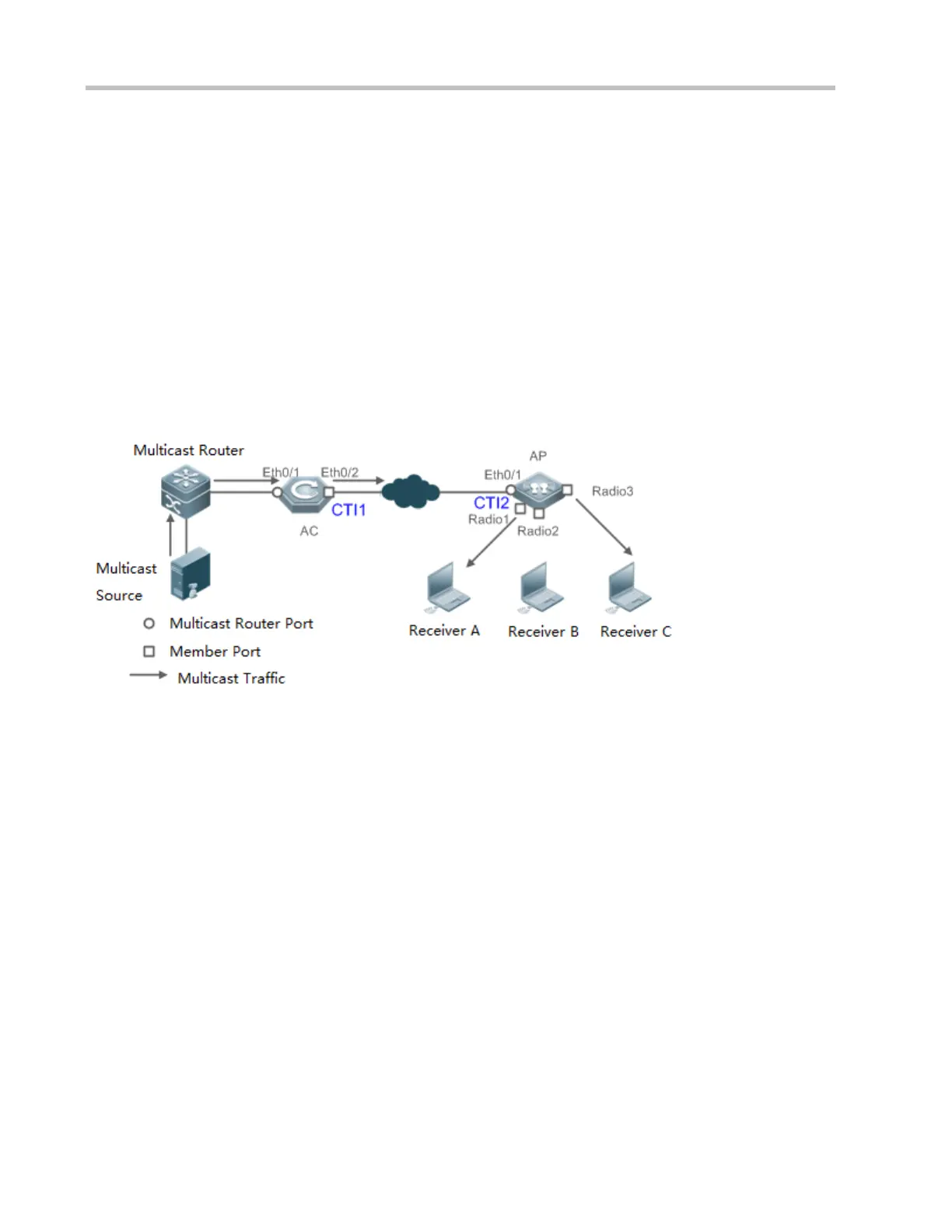Configuration Guide Configuring IGMP Snooping
can automatically detect the multicast router port and maintain the port dynamically. It also allows users to configure a
static router port.
Member port: The port is on a Layer-2 multicast device and is connected to member hosts. It directs the profile
members. It is also called the Listener Port. By listening to IGMP packets, the Layer-2 multicast device can
automatically detect the member port and maintain the port dynamically. It also allows users to configure a static
member port.
Wireless devices have wireless ports in comparison with common wired devices, and the communication between an AC and
APs is made by establishing CAPWAP tunnels. After a CAPWAP tunnel is established between an AC and an AP, CTI1 and
CTI2 interfaces are respectively virtualized on the AC and AP for communication. The following figure shows multicast router
ports and member ports on the AC and AP.
Figure 10-6 Two Types of Ports in Wireless Environment
Multicast router port: When the AC receives the PIM Hello or IGMP Query packet from the upstream multicast router
(Layer-3 multicast device), the multicast router port Ethq/1 forms. When the AP receives the PIM Hello or IGMP Query
packet forwarded by the AC, the multicast router port CTI2 also forms.
Member port: also called listener port, that is, the port on a device for connecting to a multicast member. When Ports
Radio1 and Radio3 on the AP receive Report packets from a wireless user receiver, they learn the wireless port as a
member port. When the virtual interface CTI1 receives Report packets forwarded by the AP, it also learns the relevant
wireless port as a member port.
IGMP Snooping Forwarding Entry
The device running IGMP snooping forwards IP multicast packets in accordance with the IGMP snooping forwarding entry.
An IGMP snooping forwarding entry includes the following items: source address (S), profile address (G), VLAN ID
(VLAN_ID), multicast router port, and member port. It indicates that packets of required features (including S, G, and
VLAN_ID) should enter the multicast router port and exit from a member port. An IGMP snooping forwarding entry is
identified using a group of S, G, and VLAN_ID.
To display the IGMP snooping forwarding entry, run the show ip igmp snooping gda-table command.
